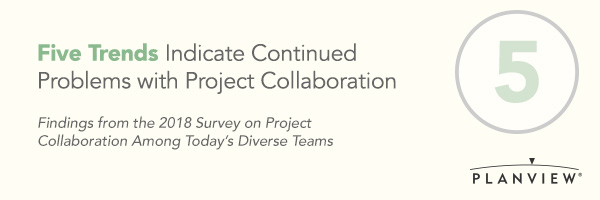As a project manager, you may be familiar with the 3 levers of project management. Sometimes referred to as the “triple constraint,” this theory states that most projects are carried out under the following constraints:
- Projects are to be delivered within the predetermined budget.
- Projects are to be completed by the agreed-upon deadlines.
- Projects are expected to operate within the agreed-upon scope.
What’s more, the three levers theory states that project managers can control any two of the levers, but doing so causes the third lever to move independently of the other two. In other words, you can modify two of the constraints, but the remaining constraint will cause the project to suffer in one way or another.
The three levers theory acts as a sort of trade-off, where optimizing one part of your project is going to have a negative impact on another. For example, if you wanted to maintain a constant scope while cutting costs, your timeline will increase. Or, if you wanted to increase your scope and reduce your timeline, project costs are going to rise.
How effective is the 3 levers approach?
For the longest time, the three levers philosophy was considered to be among the most important concepts in project management. While it still has its supporters, critics are now quick to point out the flaws of this theory.
For starters, assuming that a project’s success is confined to three constraints is an oversimplification that reduces the complexity of project management. While cost, time, and scope are all very important components of a project, they’re not the only elements that determine success. It’s now believed that projects involve additional constraints that influence their performance and outcomes. Some of these additional constraints include benefits, risks, and quality.
There’s only one controllable lever
Another criticism of the three levers theory challenges the notion that project managers have the power to influence all the constraints. Critics argue that the three levers theory presents the illusion of choice, and in reality, managers only have control over the scope of a project.
The reasoning behind this is that time and cost are more rigid, making them less receptive to change than scope. While it’s certainly possible to change your project’s deadline and budget at any point during its lifespan, the process is much more complicated than simply adjusting your scope.
This is because budget and deadline changes usually involve some level of management intervention, whereas anyone working on a project can affect the scope without appealing to stakeholders. For this reason, scope is arguably the most dangerous constraint to play around with, as changes to it could have a serious impact on your project’s time and cost. And when you consider all of the consequences that arise from unchecked scope creep, it’s easy to see why managers should take extra care to prevent workers from broadening scope unnecessarily.
Not every problem has the same solution
One of the biggest drawbacks of the three levers theory is its generalized approach to solving problems. Because projects are reduced to three simple constraints, three levers encourages managers to solve problems using a basic equation: Manipulating X and Y will change Z.
Pretend that your project is over budget, and in order to ensure project success, you need to find a way to cut expenses. Using three levers, you can reduce cost by manipulating scope and time; in theory, narrowing your scope and shortening the duration of your project leaves you with more money.
Unfortunately, it’s not always that simple. Some problems can’t be solved simply by throwing more money at them or increasing deadlines. In situations like these, the three levers approach doesn’t always offer the best solution.
Furthermore, experts now argue that there’s a fourth constraint, quality, which affects all three levers independently. Initially considered to be part of scope, some view quality as a fourth lever that should be factored in by looking at testing and acceptance criteria during the decision-making phase of the project.
Using scope to manage your project
As mentioned above, adjusting scope is the easiest way to make changes to your project. Moreover, it’s the only constraint that you have complete control over. Stakeholders are usually in charge of setting budget requirements and determining the length of your projects. Because of this, it’s nearly impossible to make changes to your project’s costs and time without first involving executives in the process.
Scope, however, is something that is within your control. As the project manager, part of your job is to manage the scope of your projects so that tasks are successfully completed and company goals are met. And as arguably the most “powerful” of the constraints, every change you make to the scope of your work will have an equally powerful effect on the time and cost. This means that, instead of using the three levers approach to control your project, you can optimize time and cost by simply regulating its scope.
The advantage you get from this is that scope can be controlled without appealing to external parties. If you need to make changes to the budget, you’ll need to consult with stakeholders and get approval beforehand; if you need to change the duration of the project, you’ll have to explain why to executives and board members, and hope you’re convincing enough to sway them. But scope is different—you have complete control over the direction and aim of your project, and you’re free to make informed changes as you see fit.
However, with great power comes great responsibility. Managers who take a cavalier attitude with regards to scope can seriously inhibit the performance of the project, even bringing it to a screeching halt as scope creep and lack of direction devour time and resources.
You can prevent this from happening by doing the following:
- Always consider your company’s objectives when managing the scope of a project.
- Don’t make the mistake of prioritizing technical objectives over business objectives.
- Prioritize your tasks so that you can assign and track resources more effectively.
One of the biggest challenges you may face is the ever-changing nature of stakeholder expectations. Over time, stakeholders are more likely to request changes to the project. This is especially common in long-term projects where new stakeholders come on board halfway through the project. Accommodating these requests can be a balancing act, as some may be completely off the mark. For this reason, use your judgement and only accommodate requests that are needed to reach your project goals.
Bringing it all together
It’s important to keep in mind that scope isn’t something that should be changed on a whim. When you use scope to manage your projects, use it in such a way that brings you closer to meeting the company goals.
The best way to effectively manage your project’s scope is to keep a finger on the pulse at all times. While that may seem difficult to do, a reliable project management solution helps by removing any barriers between you and your goals and objectives. Features like Kanban boards and Gantt charts add an increased level of transparency, helping you accurately manage scope by prioritizing tasks and giving you visual representation of your workflow and progress. By doing so, you’re more likely to succeed without having to request changes to your project’s costs and time.

![Project Management Software: Chaotic Ways of Working [Video]](https://blog.planview.com/wp-content/uploads/2017/08/Chaotic-Ways-of-Working-2.jpg)



